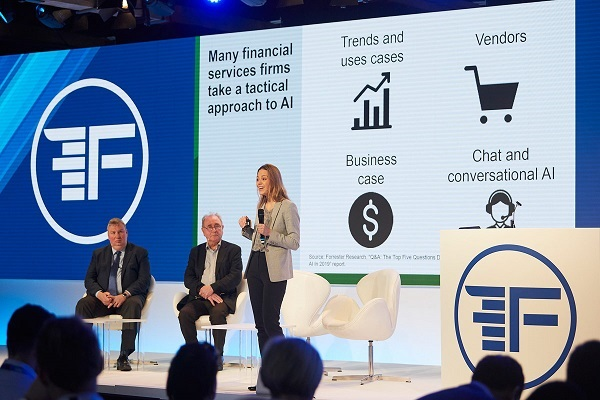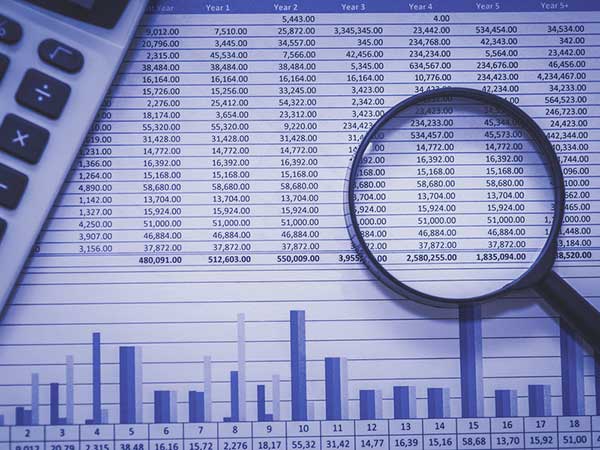Small business loans traditionally come with massive origination costs attached to them. When you consider the revenue generated, they tend to have some of the highest relative fees for the lender. Smaller and mid-sized banks exist to serve their communities in part, but they need to collect enough interest in turn to continue funding their operations. As a result, owners of smaller financial institutions have had to look for ways like big data to revitalize the way they grant these loans.
Harnessing big data was impossible for these lending agencies, because they tend to lack the top-tier server infrastructure historically needed to do so. However, companies no longer need to have massive IT departments just to leverage data and make decisions based on it. Efficient data-gathering processes are revolutionizing the loan application and approval workflows, which in turn is generating a great deal of buzz for these companies.
Best of all, it doesn’t take much to get in on the action so analysts feel that we could see a variety of companies follow in the footsteps of these early adopters.
Automating the loan approval process
Traditionally, the process of applying for a loan and getting it approved takes quite a long time. A bank official has to consult a business loan calculator and then see if it even makes sense to grant the loan out. Interest rates are the lowest they’ve been in decades, which makes it even harder for people to grant loans in good faith.
This is especially true if they’re at all fearful that a small business owner might end up defaulting on it. Pundits have claimed that upwards of a third of a loan officer’s average day is eaten up by reviewing loan applications that clearly need to be rejected. The mundane aspects of the job are complex and boring, which in turn increases the risk that someone may make a costly mistake.
Some industries are riskier to loan to than others. Restaurant loans are classically among the most risky, but without strong data to an official’s assumptions up it can be hard to say no to this kind of a loan.
Engineers have developed automated scripts. Ones that check the particulars of each small business loan application against a database of historical performance data. This information is more specific than what one might expect from simply looking at industry-wide figures. It includes performance metrics in regards to region, the time of year a business starts and many other fields.
Some of the most sophisticated loan processing systems rely on data collected from unusual sources. For instance, a program deciding on whether or not to grant restaurant and club owners a loan may consult popular online review sites. If a business has many positive reviews that look organic enough, then this may help a company land the money they’re looking for.
Mid-sized operations often have hundreds of reviews, which makes it difficult for human operators to parse through them. Some advanced command line-driven programs are capable of scraping thousands of reviews an hour without making a single false identification.
These scripts can then automatically judge whether or not a loan should be rejected. In most cases, they can eliminate upwards of 40 percent of all loans without human intervention.
When intervention is required, it generally isn’t to review loans that are sure misses.
Analyzing data collected from alternative sources
These programs are continuing to get increasingly accurate. Especially because they’re broadening the amount of data they can collect from different sources. Many of these venues would be quite surprising to loan officials who’ve worked for larger financial institutions. For instance, few people would ever consider monitoring a company’s social media presence before granting them a loan.
Big data-focused smaller banks are looking into this. In order to see what businesses are most likely to make good on their initial principle. The idea is that businesses that have the most organic social media interactions with their clients will be able to drive customers to their brand over time.
Risk-based pricing has always been a big issue for creditors. Firms that are engaged with their clients on multiple levels tend to represent the least risk. Which makes this information all the more important.
However, this raises a question. What happens if someone tries to get a more agreeable loan by artificially driving traffic to online venues? Fraud always seems to follow innovation. And there’s no doubt that some people who understand big data will eventually try to manipulate it.
Fortunately, these apps are also getting better at spotting manipulated traffic. Some businesses pay for others to promote their company online. And then make it look like it’s more popular than it actually is. When a creditor’s program spots this, it can raise a red flag. Then loan officials know there might be something unusual going on with said company.
Using data to set financing rates
Perhaps the most radical use of this kind of technology comes in the form of automatic interest rate suggestions. Few alternative methods have been developed that can actually help with the financing process. Officials generally have to consult a table that sets rates across the board. Which makes it difficult to offer good rates to those who find themselves in exceptional situations.
By making smart use of marketing data, it can be possible to predict future performance of a small company. With, at least, some degree of certainty. While this is by no means an exact science, there’s a good chance that the predictions made by data-driven loan calculation apps will hold true in ten or twenty years. This is giving loan officials much more leeway when it comes to setting interest rates.
Business owners who would otherwise be subject to an absurdly high interest rate might now be able to get a much more reasonable deal. Since many of the fraudulent and problematic claims associated with the finance industry are taken out of the equation. It looks like big data should be making things much more fair in the coming years.























![Growth and future of Fintech: From Wire Transfer to Blockchain [Infographic]](https://crayondata.ai/wp-content/uploads/2019/02/banking1-1.jpg)